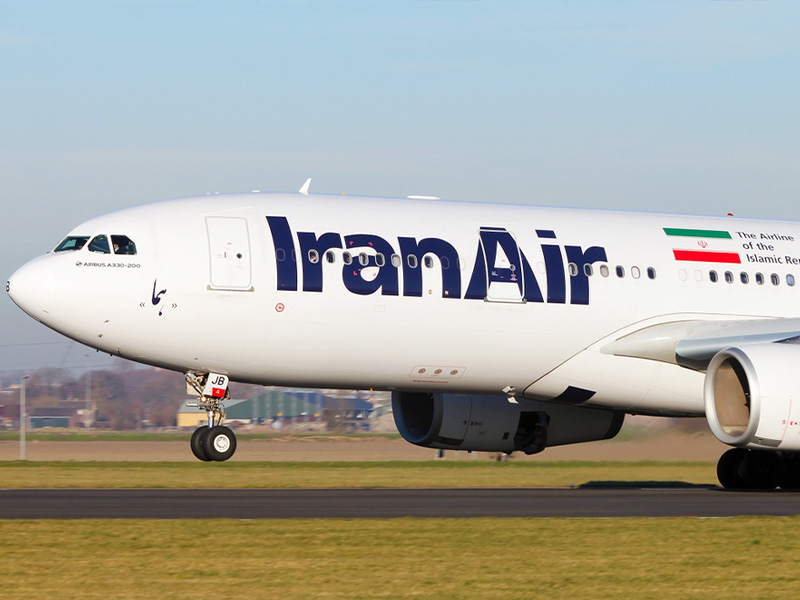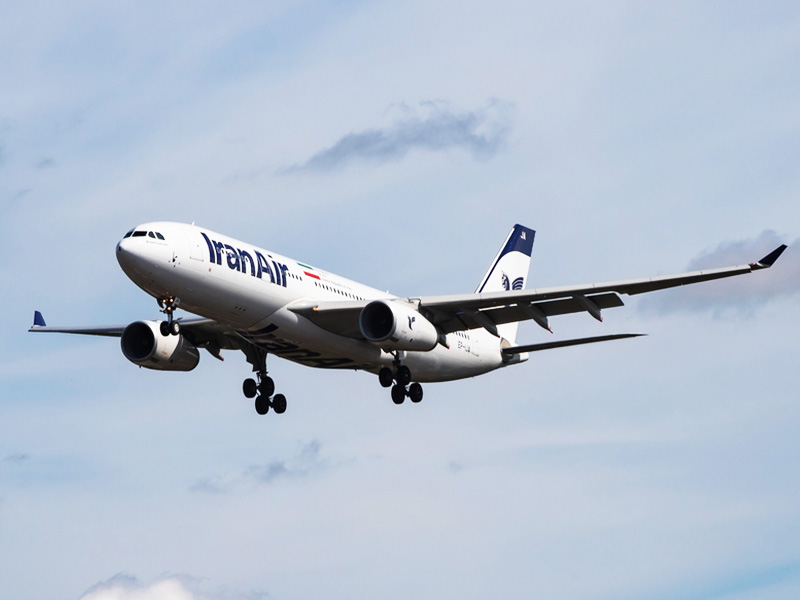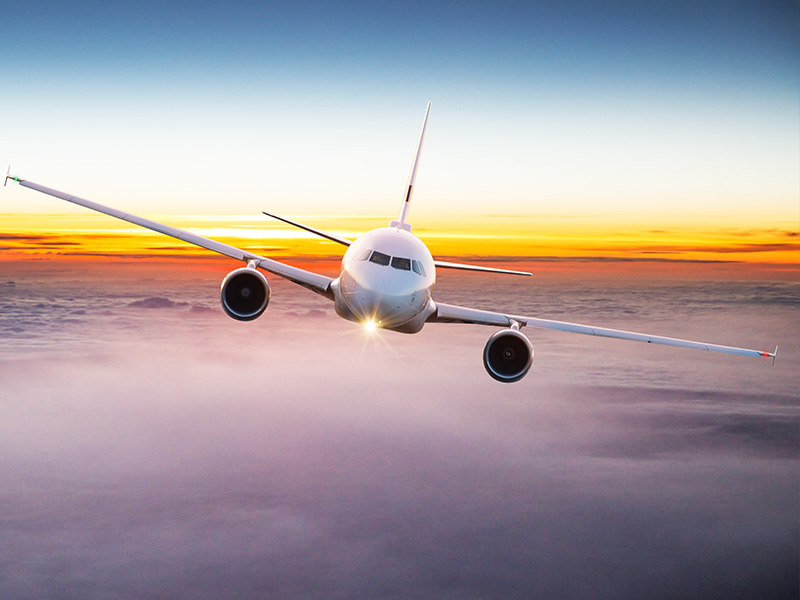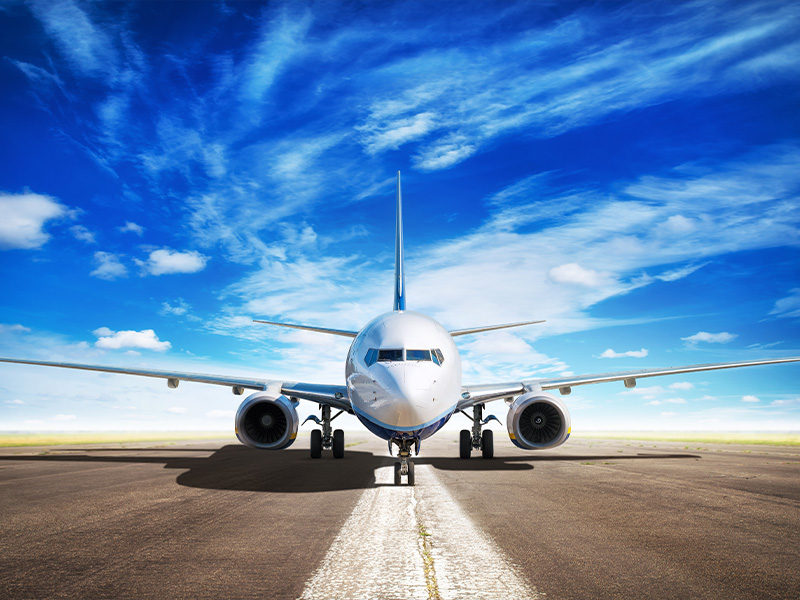Reza Afshar and Gholam Ebtehaj came up with the idea for Iranian Airways in May 1944. After the war, the first passenger flight was from Tehran to Mashhad. After that, there were flights between Tehran, Esfahan, Shiraz, Bushehr, Abadan, and Ahwaz. The airline started flying to Cairo, Baghdad, and Tel Aviv in 1946 and then to Paris in April 1947. Between 1945 and 1962, the airline grew to be one of the biggest in the Middle East. It also started sending some flights to Europe each week. At first, the Iran Air fleet was made up of Douglas DC-3s. Later, Douglas DC-4s and Vickers Viscounts were added to the fleet.
Book flights , Hotels and Tour packages from Eligasht:

Iran Air: HOMA
Iran Air fleet includes several aircraft that have been in use for many years. The majority of its existing fleet has an average age of 20 years or more. The flag carrier of Iran employs aircraft that have logged several years of flight, with the exception of a few ATRs, A330s, and members of the A320 family. Even while the airline has endeavored to update its fleet recently by placing orders for both Airbus and Boeing, progress has been as rapid as possible. Iran Air presently owns 53 aircraft, albeit several of them are not in service, according to the Iran Air Database. Its fleet may be divided into the following categories:
| Aircraft Type | Manufacturer | Number |
| A300B2-200 | Airbus | 8 |
| A300B4-200F | Airbus | 2 |
| A310-200 | Airbus | 6 |
| A340-200 | Airbus | 1 |
| B707-300 | Boeing | 5 |
| B727-100 | Boeing | 4 |
| B727-200/Adv | Boeing | 6 |
| B737-200 | Boeing | 6 |
| B747-100B | Boeing | 6 |
| B747-100SF | Boeing | 3 |
| B747-200B | Boeing | 1 |
| B747SP | Boeing | 4 |
| DC-9 | McDonnell Douglas | 1 |
| In service + Retired | 53 | |
| Current Fleet | 30 |
New Airbus Aircraft in Iran Air Fleet
Iran Air inked a purchase deal with Airbus in January 2016 for a total of 118 aircraft, including 12 A380s and various other versions of the manufacturer’s twin-engine aircraft. The formal order for 100 aircraft was announced by Airbus on December 22, 2016, and it included aircraft from the Airbus A320 family and the A320neo family, as well as 16 A350s, 38 A330s, and A330neos. Airbus started the delivery process in January 2017, beginning with one A321 and then moving on to two A330-200s. These three aircraft were all originally ordered and manufactured for Avianca.
New ATR Aircraft in Iran Air Fleet
Iran Air inked a contract with the aircraft manufacturer ATR on February 1, 2016, for the purchase of twenty ATR 72-600 turboprop aircraft, with options to purchase twenty different planes from the same model. Iran Air fleet wants to employ the ATR 72s as a part of its strategy to extend its domestic market reach and to offer service to the smaller airports that are situated in less populous cities in Iran. This will be accomplished via the use of the aircraft. Deliveries were scheduled to begin at the beginning of 2017. In the end, all four aircraft were transported in a single convoy on May 16, 2017, when they were handed over to the Iran Air fleet.
The United States Office of Foreign Assets Control (OFAC) granted ATR a license valid for two years in April 2019, allowing the company to continue supplying the fleet of 13 ATR 72-600s with spare parts and other necessities necessary to maintain the fleet operationally. However, the authorization for the storage of the other seven ATR 72-600s from the 2016 order has not been revoked.

New Boeing Aircraft in Iran Air Fleet
Iran Air made an official announcement in June 2016 that it was in discussions with Boeing over the possibility of placing an order “similar in magnitude to the 118 Airbus aircraft deal.” On June 21, 2016, Boeing made the announcement that it had signed a provisional agreement to sell jetliners to Iran. If finalized, this agreement would be one of the most significant business transactions the Islamic Republic of Iran has had with an American manufacturer since trade sanctions against Tehran were lifted. Iran Air placed a preliminary order with Boeing on December 11, 2016, for eighty aircraft, subject to “contingencies cleared.” The purchase consists of fifty 737 MAX 8s, fifteen 777-300ERs, and fifteen 777-9s. The deal was announced by Boeing.
Iran Air Fleet orders after the JCPOA
| Manufacturer | Aircraft Type | Orders |
| Airbus | A320-200 | 6 |
| Airbus | A320neo | 32 |
| Airbus | A321-200 | 9 |
| Airbus | A330-200 | 9 |
| Airbus | A330-900 | 28 |
| Airbus | A350-1000 | 16 |
| Airbus | A380-800 | 12 |
| Boeing | 737 MAX 8 | 50 |
| Boeing | 777-300ER | 15 |
| Boeing | 777-9 | 15 |
| ATR | 72-600 | 20 |
| TOTAL | 212 |
Old But Gold Aircraft In Iran Air Fleet
Airbus A300B4 (EP-IBG)
The Airbus A300B4 (EP-IBG), which has been in service for the Iran Air fleet for 38 years, holds the record for being the airline’s oldest operational aircraft. It was initially sold to Karair of Finland in 1986 and has since flown for many other airlines, including Air Scandic and Air ACT, before joining the Iran Air fleet in 2009. As of the end of 2021, the aircraft had logged a total of 68,187 hours over the course of 23,550 flight cycles.

Boeing 747-200C (M) (EP-ICD)
It has been in service for 33.5 years, making this Boeing 747-200C (M) (EP-ICD) the second-oldest aircraft in the carrier’s fleet of airline. 1988 marked the beginning of the aircraft’s service with Martinair, and 20 years later, in 2008, it was handed over to Iran Air as a cargo plane. Two further Airbus A300s, with tail numbers EP-IBA and EP-IBC, are in the airline’s fleet of aircraft. Their ages, respectively, ranging from 28 to 30 years. In addition, the airline operates an Airbus A310, registration number EP-IBK, which has been in service for over three decades and is one of just a few aircraft of its kind that is still in operation today.
Direct flights from Tehran to London Heathrow
Iran Air is the only airline that has direct flights from Tehran to London and London to Tehran every week. On this route, the Iran Air fleet utilizes one of the most modern aircraft; the Airbus A330-200. Let’s see what Airbus A330-200 offers to its passengers.
Iran Air Airbus A330-200
One of the most modern and dependable airplanes in the sky is Airbus’ A330-200, which has benefited from almost 20 years of constant incremental improvement. The A330-200, with a 222-inch wide twin-aisle fuselage that typically holds between 210 and 250 passengers, may be set up with up to 406 seats in higher-density configurations, offering a capacity option for operations on routes up to 7,250 nm.
The A330-seat 200’s pitch can be adjusted in steps of one inch, and the galleys, restrooms, and storage spaces may be set up in various configurations and locations, giving operators a high degree of flexibility. If the Iran Air fleet wants to optimize the cabin for shorter trips, it may remove the pleasant crew rest places that the aircraft can accommodate on longer-distance flights in around 50 minutes. When constructed, these rest spaces can accommodate up to seven bunk beds without reducing passenger cabin capacity.
The A330-200 may be equipped with the most cutting-edge fourth-generation in-flight entertainment, including video-on-demand, as well as satellite connection for mobile phones. With a customized experience for everyone — from youngsters to adults, vacationers to business travelers — passengers may settle in with movies of their choosing and keep up with what’s happening on the ground below.
The A330-200 shares feature with other Airbus in-production aircraft as well as other members of the A330 Family, which results in efficiency gains in maintenance and training. It makes use of ground-breaking fly-by-wire digital controls, like other Airbus aircraft. Iran Air fleet trusts the A330-design 200’s because of its 99.4% operational efficiency while in service, which is understandable given the industry standard. The aircraft is also a perfect complement to Airbus’ top-tier widebody A350, particularly the A350-900, which provides around 80 more seats in conventional 3-class arrangements.

Iran Air Boeing 747SP
The Boeing 747SP operated by the Iran Air fleet is famous for making nonstop fly from Tehran to New York City. The original 747-100 was superseded by the 747SP, which had a shorter fuselage and increased range. Boeing 747SP was designed early on in the 747 program with the intention of catering to the particular needs of individual airlines. In 1976, Pan Am was the airline that gave this “Special Performance” variant its first flight. Boeing supplied 45 747SPs, and the type has been flown by a large number of airlines throughout the years, particularly in the USA, the Middle East, and Asia.
Alongside the changes that were taking place as a result of the increased capacity that the 747 provided, there was also a rising demand for longer flights that did not need any stops. Both Iran Air and Pan Am were investigating the feasibility of operating nonstop flights between NY and Tehran. Pan Am was also examining alternate routes via the Middle East, as well as the possibility of flying from NY to Tokyo.
1976 was the year when Pan Am first put the 747SP into service. Pan Am purchased ten brand new 747SPs from Boeing, which were ultimately transferred to United Airlines. Additionally, it bought an additional one from Braniff Airways. Iran Air also began operating four 747SPs in the year 1976, when the model was first released. It was the final airline to take them out of service for commercial purposes, and they did so in 2016.
The 747SP was developed in response to the unique needs of Pan Am and Iran Air; nevertheless, there was significant interest from other carriers as well. The explanations for this are often distilled down to the aircraft’s ability for long-distance travel or its lesser size and capacity.

Iran Air A330-900neo
16 Airbus A330-900neo are joining to Iran Air Fleet as part of renewing the Iran Air Fleet in 2016. The A330-900, which is the most significant member of the A330neo Family, retains the A330-300 variant’s fuselage length and can hold up to 460 passengers in economy class or between 260 and 300 seats in a conventional three-class configuration. It is a flexible platform that offers Iran Air fleet very effective performance for short-haul portions as well as long-haul flights covering lengths of up to 7,200 nm.
The newest Rolls-Royce Trent 7000 engines, new technology, and several aerodynamic advancements, including new composite winglet devices that expand the wingspan by four meters to boost lift and decrease drag, are among the fundamental changes. The A330-900, which is built to be effective on any sector length, reduces fuel consumption and CO2 emissions by 25% when compared to earlier generations of aircraft and delivers double-digit cost benefits per seat, giving Iran Air fleet additional opportunity to save money.
Iran Air’s passengers on the A330-900 experience this really creative, inspirational, and relaxing atmosphere, which Airbus introduced with the A330neo Family, the first aircraft to use the new Airspace cabin concept. In order to provide passengers with a pleasant environment that gives more great room everywhere, no effort has been wasted. This includes wide seats, a brilliantly illuminated cabin, the newest in-flight entertainment, as well as email and Wi-Fi capabilities. Airspace offers more personal space, a distinctive welcome area, and signature design elements created by Airbus to transform the A330-cabin 900s into an accurate representation of luxury. Airspace uses the cutting-edge cabin developments introduced on Airbus’ A350 and encompasses four key pillars (comfort, ambiance, services, and design).
Iran Air Once Ordered Three Concordes!
At the height of the Concorde’s development, in 1972, several airlines from all over the globe ordered the revolutionary aircraft. Two supersonic planes were ordered by the Iran Air fleet, and an option for one more. What happened in this order’s past, and what may have happened? Iran Air was scheduled to get the first Concorde at the end of 1976, the second at the start of 1977, and the third, if selected, in 1978. A/C 214 and 216, the two production aircraft designated for Iran Air, were eventually transferred to British Airways.


